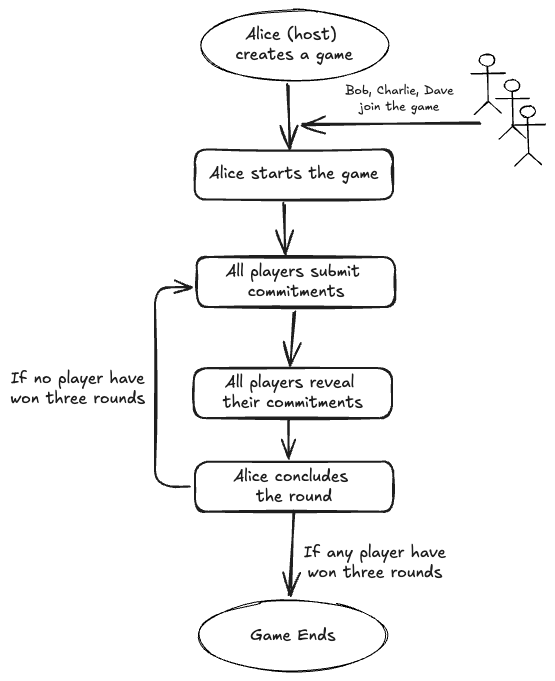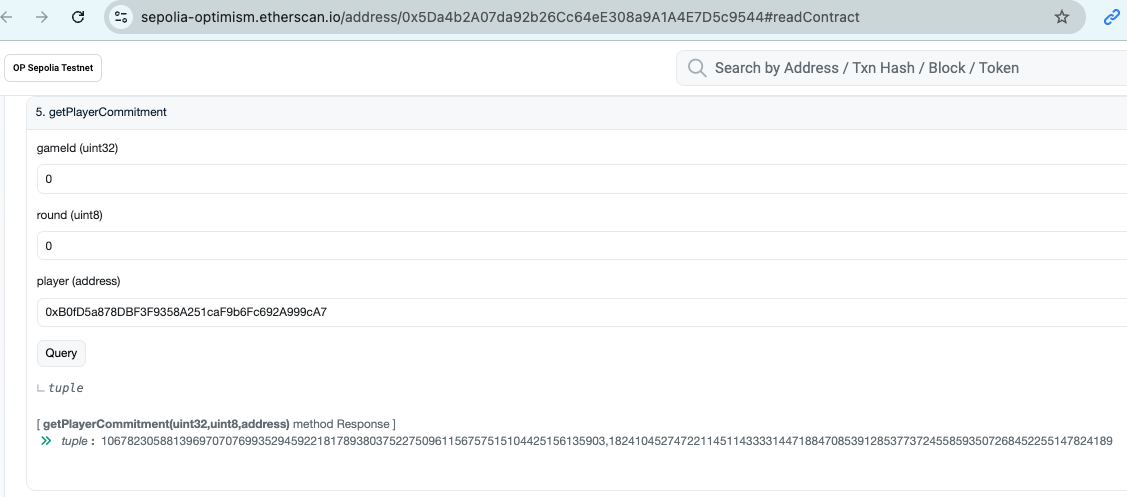PSE Core Program 2024 Capstone Project
PSE Core Program
In the past two months, I got into PSE Core Program and have intensively studied zero-knowledge cryptography. In the first five weeks, we have a curated list of materials to study, ranging from cryptographic primitives such as Merkle tree, symmetric and asymmetric encryption to going more in-depth about various zk-SNARK protocols such as Groth16 and PLONK, and finally being introduced to the frontier of cryptography, or so they are called, including multi-party computation (MPC) and fully homomorphic encryption (FHE).
In the last three weeks of the program, we are open to scoping and working on our project to put the previous learning into practice. We can either tackle issues from various PSE projects or develop our idea. I decided to build a dApp end-to-end, meaning:
- Having a zk-SNARK component generating proofs on the client side (front end),
- Having a smart contract component that verifies the proof on-chain and
- Building the front end that interacts with users and connects the above two components.
This way, I will be able to see how they connect and how each component interfaces with the others. So let this be the goal!
Capstone Project: Number Guessing Game 🎮
I decided to build a Number Guessing Game. In this game, the goal of each player is to guess the closest to the mean of submissions from all participating players. Each game is divided into multiple rounds. Players first commit to a guess between 1 and 100. The guess value and a randomly generated value, aka nullifier, are processed through a zk-SNARK circuit on the client side, and the commitment [Poseidon(guess, nullifier), Poseidon(nullifier)] and proof are then submitted on-chain.
After all players have submitted their commitments and proofs, they open and reveal their commitments. Then, the game host will conclude the round. The mean of all guesses will be computed (on-chain), and the player who has submitted the guess closest to the mean will win the round. The player who wins three rounds first wins the game.
The following is the game flow:

- Alice (the first player) initiates a game and becomes the game host.
- In this phase, Other players can join the game. In this case, Bob, Charlie, and Dave join.
- Alice starts the game, and the first game round begins. No more players will be able to join.
- Players submit their commitment on-chain.
- Once all players finish submitting their commitments. They open the commitment. After all players open their commitments, the game host concludes the round. The mean of all submissions is computed, and the round winner is determined.
- If the winner has won three rounds, the game ends. Otherwise, another round begins.
The project is finally built, and you can try it out at:
- Project website: https://guessing.jimmychu0807.hk
- Project repository: https://github.com/jimmychu0807/PSE-core-capstone
- Smart contracts are deployed and verified on Optimism Seoplia testnet:
- Guessing Game Contract:
0x5Da4b2A07da92b26Cc64eE308a9A1A4E7D5c9544 - Commitment Submission Verifier:
0x97bc1d08465f70039dda8fe22bdedf110d2bd8a5 - Commitment Opening Verifier:
0x3044e5d78e1A2eb3c3189a3fC52C0846Ed1f3f7d
- Guessing Game Contract:
You can see the demo of a game walkthrough below:
Some Technicalities ⚙️
-
The zero-knowledge part kicks in when a player submits a guess on the chain. A 128-bit random value, a.k.a. nullifier, is generated. The guess and nullifier are passed into a wasm zk-circuit with a return value of
[Poseidon(guess, nullifier), Poseidon(nullifier)].The circuit performs a range check that the guess is between 1 and 100.We need a nullifier here to expand the preimage domain. We know the guess is a value between 1 and 100. Suppose we store
Poseidon(guess)as a commitment. In that case, an attacker/cheater can Poseidon hash all values between 1 to 100 and compare the digest with the one on-chain and be able to figure out what other players' preimages (their guess value) are. So we add a 128-bit nullifier to expand the preimage domain. -
This is how the player commitment is stored on-chain.

-
On the front end, upon a round conclusion, only the winning guess is revealed but not the actual mean. This gives the game a "fog of truth" element and will make the game a bit more interesting. But the player openings are actually stored as plain numbers on-chain. So, tech-savvy players can still inspect the smart contract storage to compute the mean. I would love to explore further ZK protocols (multi-party computation, maybe?) that could be used even to hide these openings and be able to compute the mean and the distances between users' guesses and the mean. This will then truly make this game zero-knowledge!
-
UX matters a lot. The following is my development time allocation for this project.
- 15% on circuit development, thanks to circomkit library that eases my development workflow.
- 30% on smart contract development and proof parameter interfacing. The time spent on writing the smart contract logic and comprehensive test cases is about 50-50.
- 45% is spent on front-end development. The front end involves interacting with various components, e.g., user wallets, loading wasm and generating proofs, transforming proofs to a format appropriate for on-chain submission, etc.
Many details on the front end must be done right to deliver a great UX. Right now, there is still a lot of room for improvement: e.g., the wallet display on the navbar keeps reloading when navigating within the site, and the page has to be manually refreshed to get the latest game status instead of subscribing to the smart contract events. I truly appreciate front-end engineers who build a great user experience on a Web3 app or web app.
Standing on the Shoulders of Many Giants

In the past eight weeks I have been truly standing on the shoulders of, not one, but many giants enabling me to deliver this capstone project.
I am grateful PSE Team has selected me for their Core Program and has an excellent curation of study materials. One can find a lot of materials on zero-knowledge cryptography on the internet and be easily overwhelmed by them. The curated study materials, with mentors and tutors always available to answer your questions and teammates holding regular weekly study groups/presentations, definitely helped push me through the study barrier.
Kudo to the Semaphore project team too. Studying the source code of the Semaphore Protocol and its Boilerplate has significantly contributed to this project. In fact, my project is a fork of the Boilerplate template, which is a well-architected demonstration of how a React (Next.js) front-end interfaces with the zk circuit and smart contract. I have also learned a lot of coding and optimization tricks from them.
The project has been made feasible with countless libraries that I used. For example, circom, Circomkit, snark.js, Hardhat, Next.js, Wagmi and Viem, Web3Modal etc, just to name a few. Of course, I also deployed it to the Optimism ecosystem.
Finally, I stand in awe when looking at all the researches that have gone through on pushing the boundary of zero-knowledge protocols and the field of programmable cryptography.
This is just the beginning of my BUIDLing journey, and hopefully I will share more projects with you soon.
